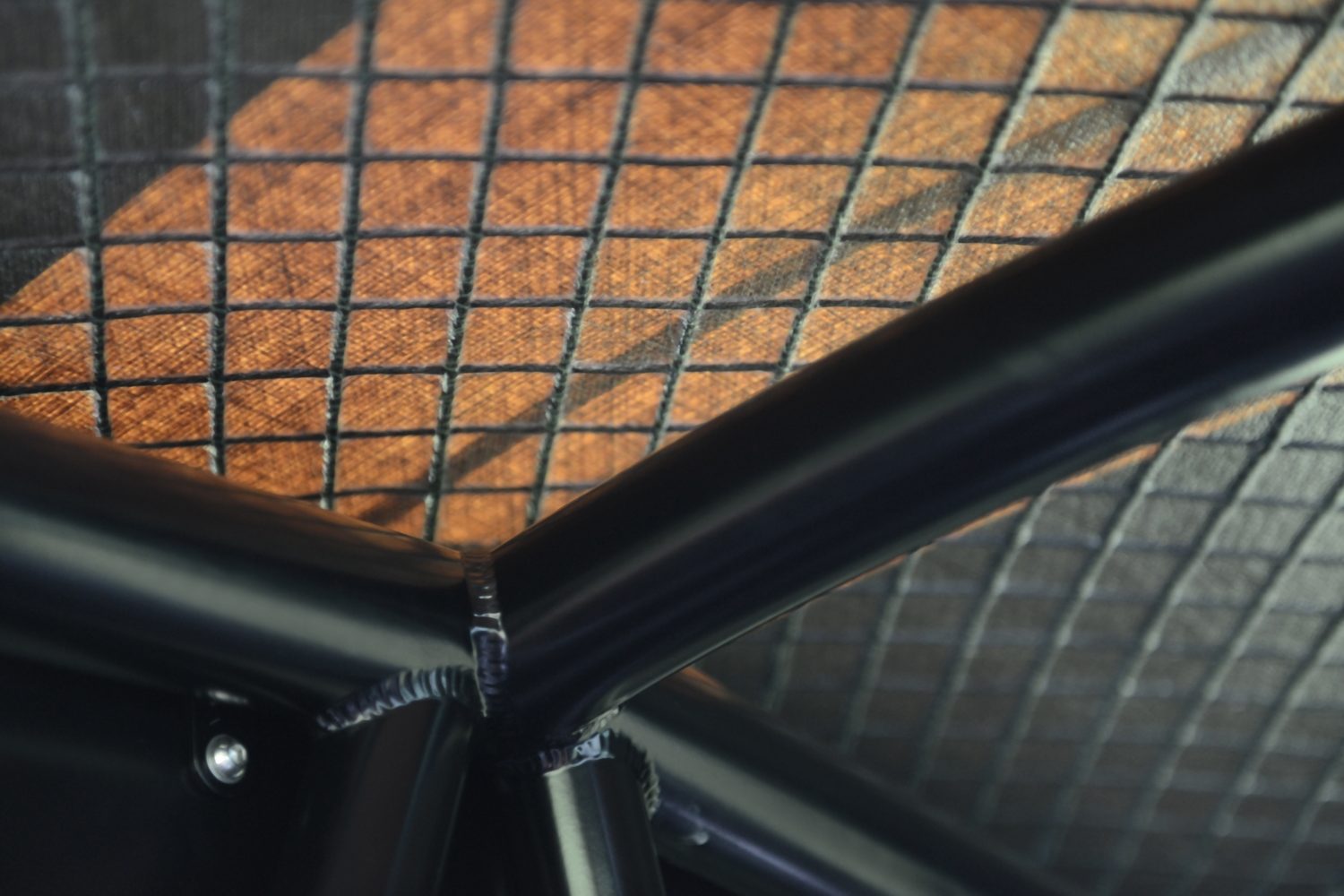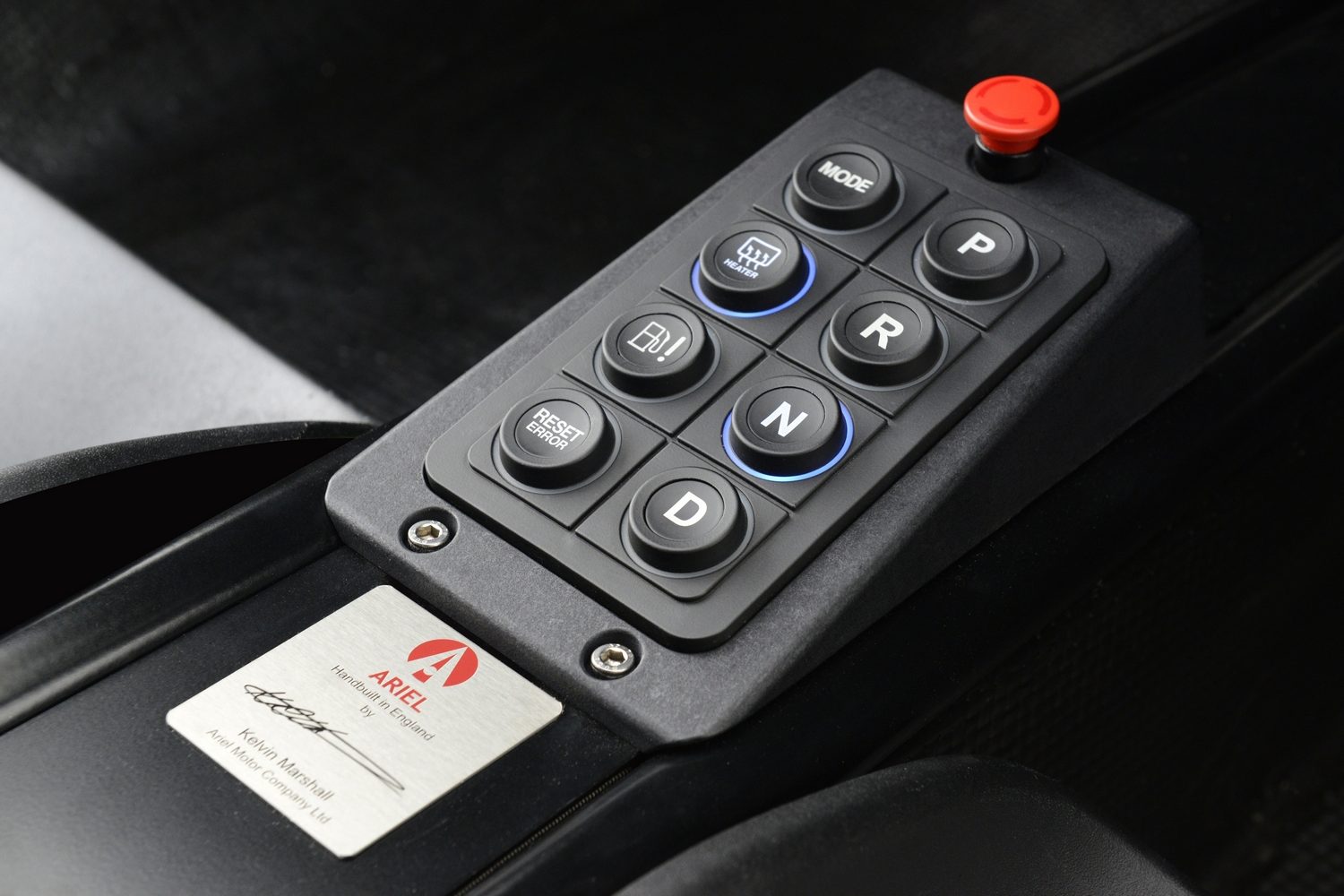The Ariel Nomad was already one of the coolest cars you could buy - looking like a pile of ambulatory scaffolding, it could conquer off-road challenges that would stump a Land Rover, even though it was rear-wheel drive.
Now, Ariel is prepping the Nomad for an electric future, and has shown off a prototype of what a battery-powered Nomad might look like. The E-Nomad uses a 41.5kWh battery pack and a 281hp rear-mounted electric motor, which also gets an integrated gearbox and inverter in the one unit. With that much power and a kerb weight which has impressively been kept to 896kg, the E-Nomad can hit 100km/h in just 3.4 seconds.
Is it as quick as the petrol version?
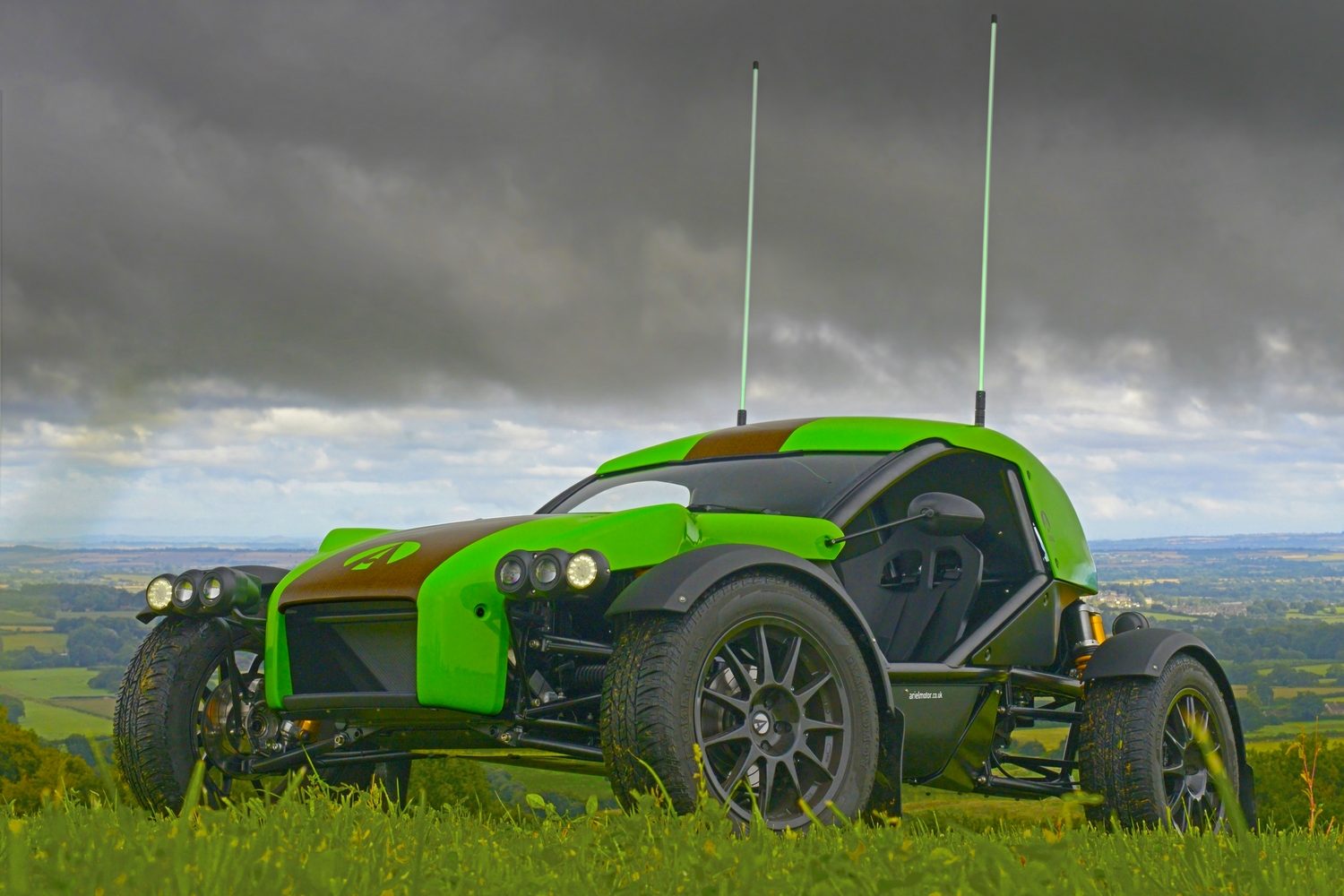
That’s a match, claims Ariel, for the combustion-engined Nomad and that’s thanks in no doubt to the 490Nm of torque available. Ariel claims that the E-Nomad when it eventually reaches production, will shift the company’s ethos of ‘serious fun’ to ‘seriously clean fun.’
Simon Saunders, Ariel Director, said: “While the E-Nomad is a concept, it does show production intent for the vehicle and hints at just a small part of Ariel’s future. Once it has been through our usual, gruelling testing regime we could opt to add E-Nomad alongside its ICE Nomad 2 sibling, so we’ll take great interest in customer feedback on the concept car.”
The engineering of the E-Nomad has been done in association with Rockfort Engineering and Bamd Composites, and has been supported by low-emissions grants from the UK government. As with the Atom and the regular Nomad, the E-Nomad has been built at Ariel’s factory in Somerset.
How heavy is the battery?
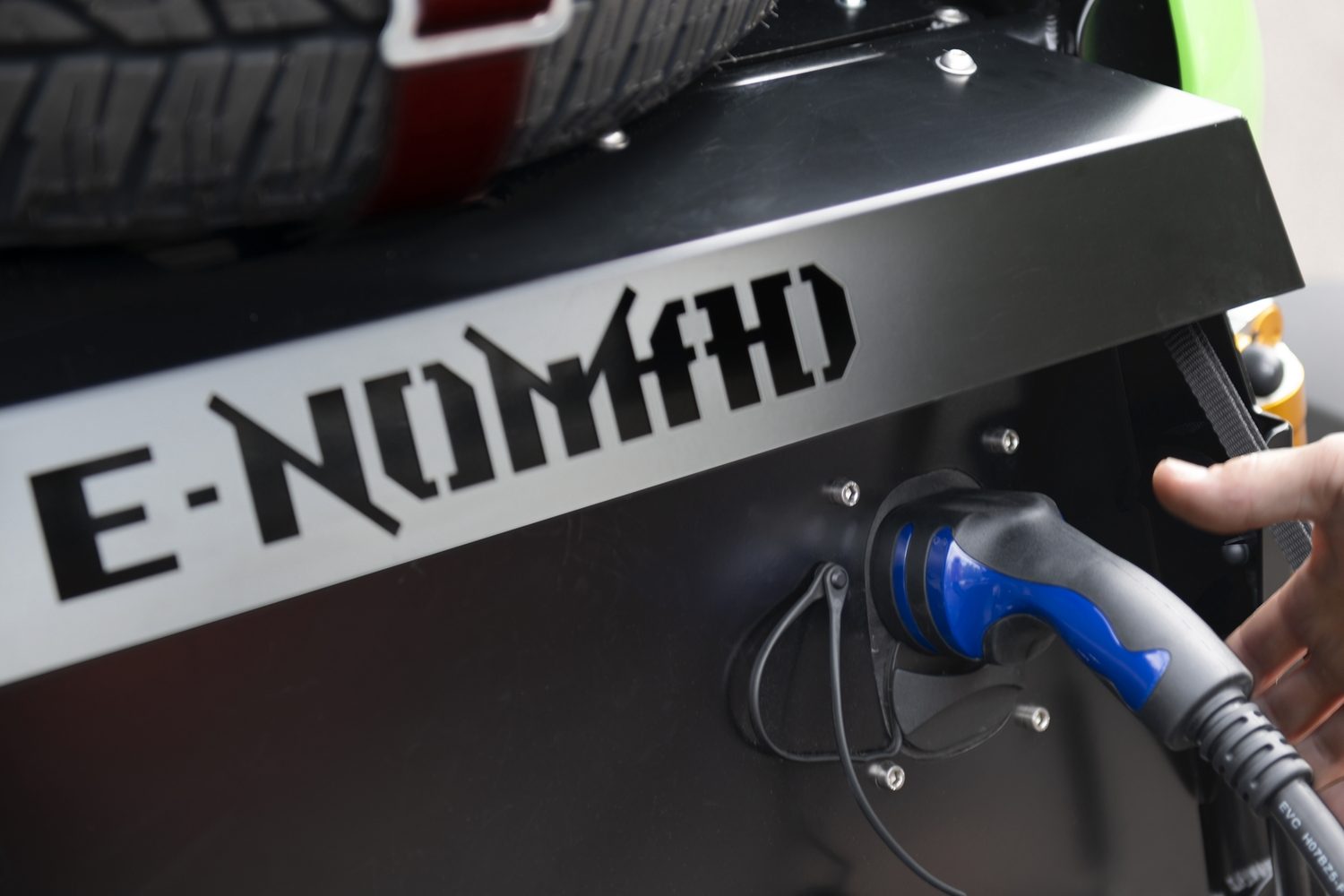
Ariel claims that its Pegasus V3 modules, using high-energy lithium-ion pouch cells, give it the best energy density possible, and help contribute to a relatively low battery weight of 300kg. The pack features an integrated cooling and warming circuit to keep the battery at the optimum temperature under all conditions. There’s a high-capacity radiator in the nose of the E-Nomad for cooling and a 5kW internal heater for warming the battery up on a cold day.
The battery sits behind the passenger section and can be fast-charged from a DC charger, taking 25 minutes to go from 20 to 80 per cent charge. There’s an automatic energy management system which allows the E-Nomad to switch between changes in power delivery, regen, and different performance maps, and all of these will be controllable by the driver too, as Ariel is keen to keep the driver in the loop of the car’s electrical performance.
The compact Cascadia Motion IDM90 combined motor, gearbox, and DX inverter drive unit weighs a mere 92kg, and the Borg Warner eDM motor spins to 12,000rpm and powers the rear wheels through single-speed transmission with reduction gearing of 8.28:1. There’s a parking lock, and a limited slip differential in there too, and the drive system gets its own dedicated cooling circuit.
This one seems to have more bodywork than a regular Nomad…
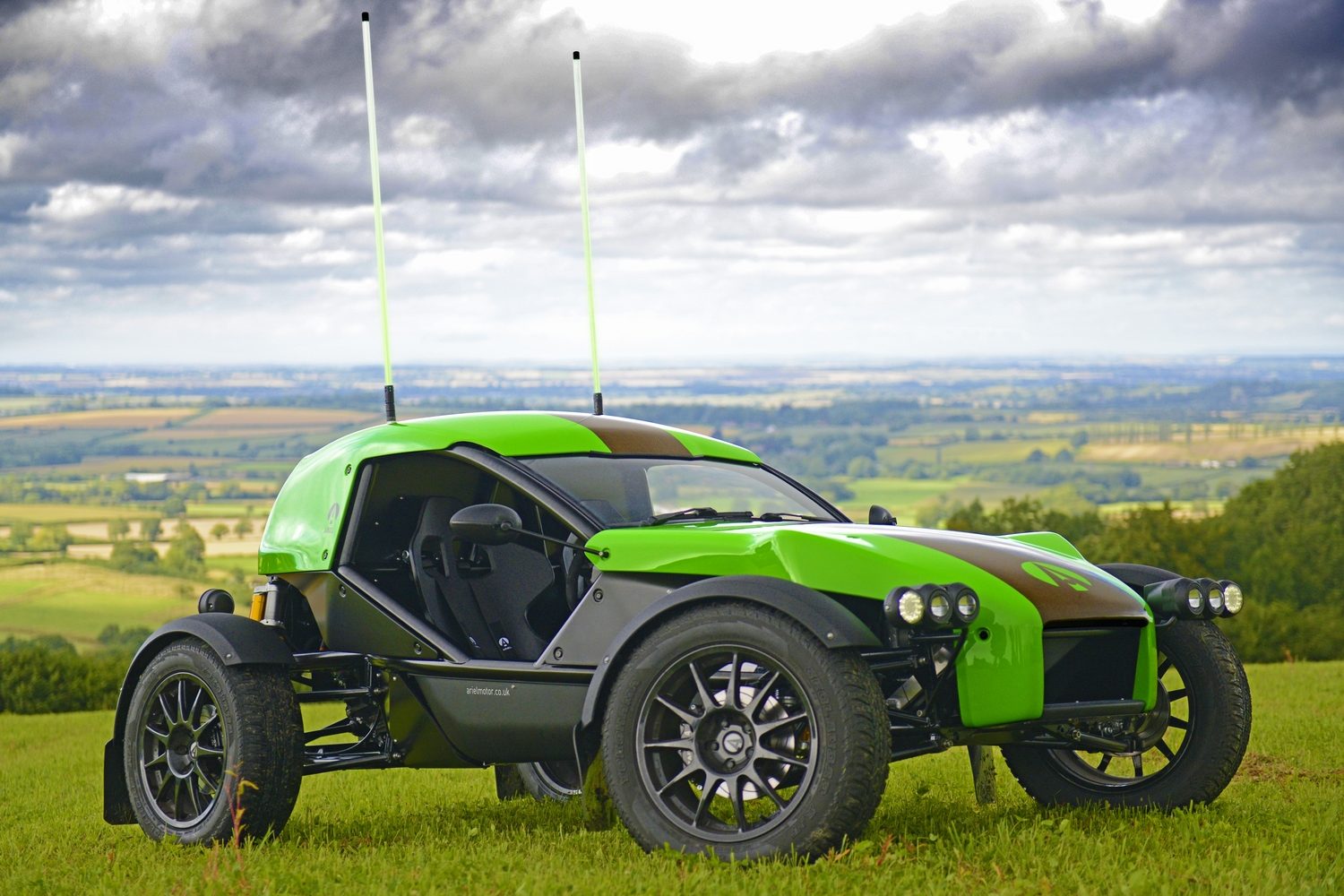
The body panels which clad the E-Nomad’s frame are made, bay Barnd Composites, using natural flax fibres, which according to Ariel have “excellent tensile strength and stiffness, as well as the plant itself being carbon capturing.” The panels are further strengthened by ‘bio-rib’ sections behind them, and there’s a claimed 73 per cent saving in CO2 when compared to carbon fibre and is nine per cent lighter than the equivalent carbon material. The E-Nomad does indeed feature more bodywork than a standard petrol-powered version, making it 30 per cent more aerodynamically efficient. A lot of that drag reduction comes from the roof panel, which also covers up the high-mounted spare wheel.
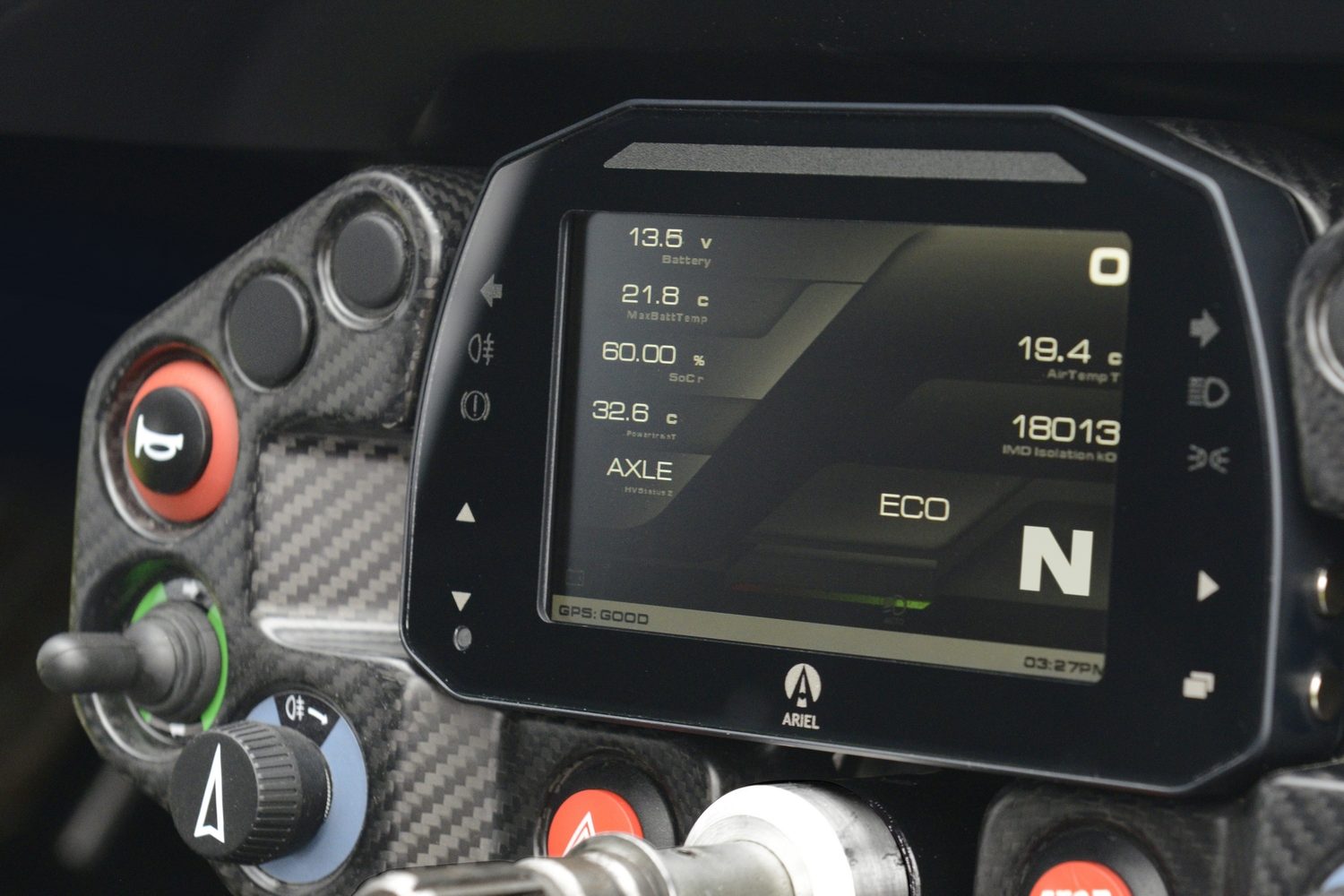
The braking system is pretty clever too, as the E-Nomad has regenerative braking, but also a driver-switchable ABS system with a special off-road setting. There are also Eco and Sport driving modes.
The cabin features a small central gear selector and an AIM Technologies TFT digital instrument pack that features the usual speed and temperature readouts as well as EV-specific displays. Given that Nomads are not generally what you’d call a daily driver kinda car, Ariel has given the E-Nomad a special battery management system which reduces battery drain when the car is left switched off for an extended period.
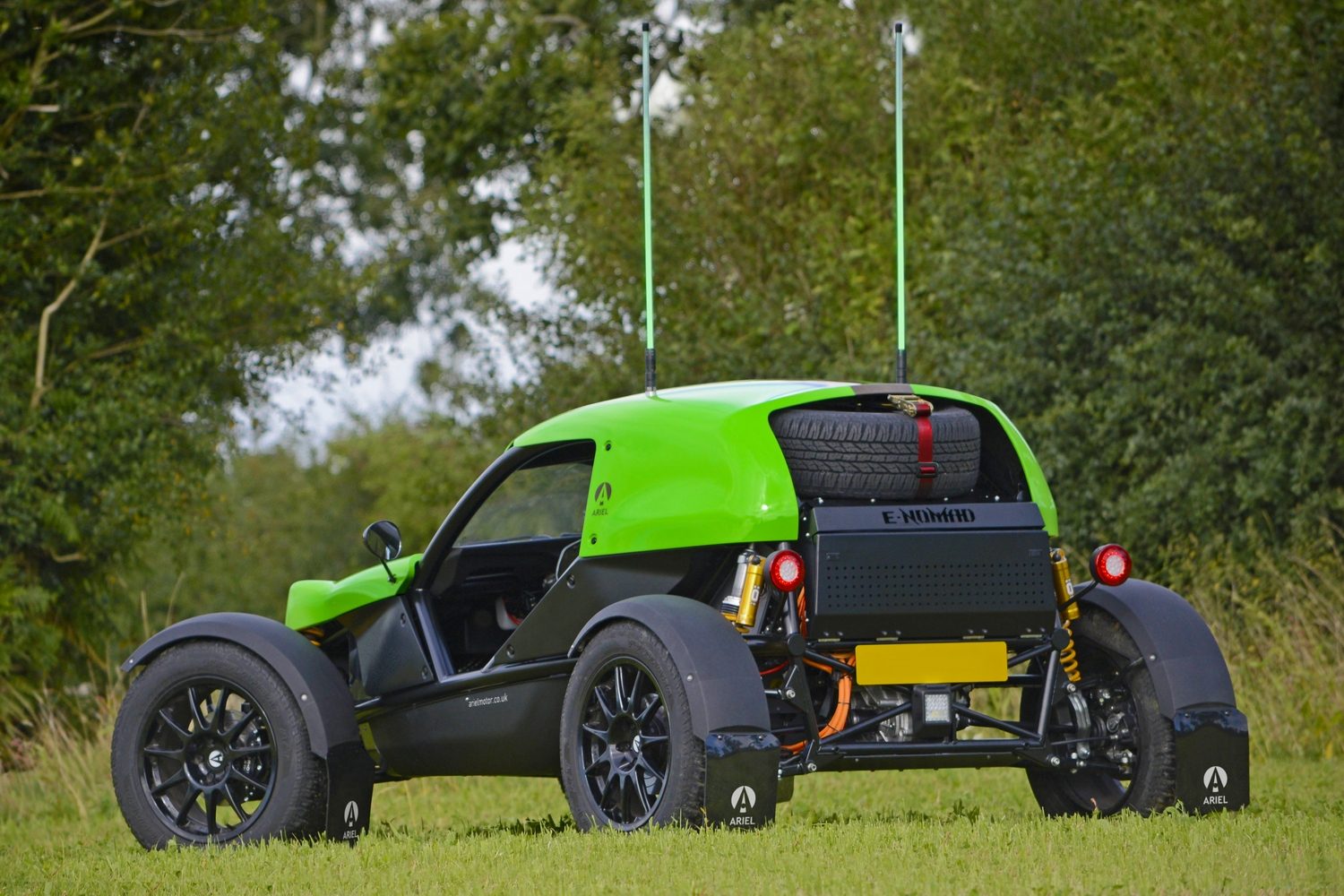
The E-Nomad, as yet, doesn’t specifically preview a full production version, but it will be shown off the public over the coming months (including at the Cenex Expo 2024 in September, held at the famous Millbrook test track) and Ariel has said that it will closely monitor reactions and potential customer demand before committing to full production.


